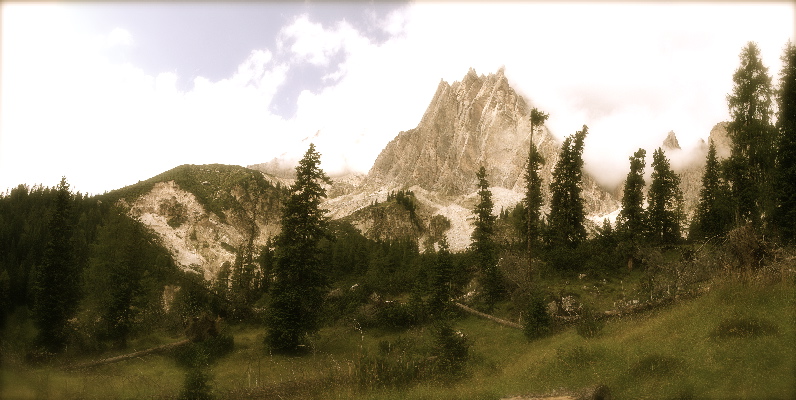
[Sextner Dolomiten in Südtirol, where Mahler completed his Sixth Symphony]
Tuesday, May 12, 2009 at 8 PM
STAATSKAPELLE BERLIN, cond. Pierre Boulez
MAHLER | Symphony No. 6, ‘Tragic’
Of the four concerts in this series I have attended, last night’s account of the Sixth has emerged as the most impressive. A world plunged deep and deeper unto itself, this is a difficult symphony to get right. Nature’s traces of bells and birds are here more distant than ever; culture’s phantasmagorias of marches and waltzes waft through only to become abstraction. It is a work that gazes through to the abyss and is eventually flung headlong into it. It knows better than to believe in redemption, yet must still seek out means of survival, forms of farewell.
Under the direction of Boulez, the Staatskapelle Berlin met the thrusting rhythmic demands of the opening movement with force and precision, delineating its martial theme as a logic refusing to be discarded or derailed. Despite the lyrical surge of the ascending ‘Alma theme’ in the strings, despite its compelling resurgences, despite this or that pizzicato-and-winds interlude, despite even moments when the theme itself almost melts into formlessness, the orchestra emphatically ensured that the heaviness always beat back into life unabated—with a life of its own and back to battering into the life of the hero. A last attempt at the ‘Alma theme’ shattered into calamity and, chillingly, was absorbed by it.
In the Scherzo following, rhythms that first seem to reassert those of the prior movement soon slide away from each other, each disbanded set struggling to find its own development, sometimes degenerating thereby. For Adorno, this movement conveyed ‘the hell of absolute space.’ Such hell was finely articulated: Boulez secured a remarkable translucency throughout that allowed layers to persist in a kind of palimpsest, precarious yet trembling onward. When the movement came to a close, the orchestra receded deftly to a faded tone, evoking the last fallings away of surface appeasements.
The symphony itself cannot fall away, however, without nestling in one last lasting pang of beauty, a kind of extended Orphean gaze. The Andante, into which floats many a wistful interval or melisma from Mahler’s earlier work, was given as pellucid an account as one could hope for. One realized here that Boulez executes Mahler’s disintegrations with exceptional fineness; one hears each grain and shred of the elemental debris (in the bleaker world of this symphony, alas, no longer stardust).
The Staatskapelle’s violin sections have not especially impressed in the performances so far, but in the opening octave motif of the Finale they at last attained a lovely, almost courageous sheen—one that would last the motif’s recurrences as well as the growing turmoil. Spare yet potent in its gestures, sprawling in length, this was the longest single movement Mahler ever wrote. Fanfare may strut through and more expansive vistas sweep in, but the essential terror of ‘absolute space’ remains. Sheer duration is the music’s (is life’s) only means of defiance throughout, but we are forced to realize that duration does not save. The hammer blows devastate from a realm of regulation wholly beyond our reach. This Finale gained much from Boulez’s distilled, almost cautious handling, while eliciting playing from the orchestra that was more densely symphonic than in their previous showings.
Boulez’s 1994 recording of this work with the Vienna Philharmonic clocks in at just under 81 minutes; last night it lasted about 84 minutes (including the extended pause, for late seating, after the first movement). Much of this significant extra time seemed to have been invested into the Finale. Call it not a notable discrepancy for the famously self-consistent Boulez, then, and rather a conscious rethinking with tremendous payoff—for audience and orchestra alike.